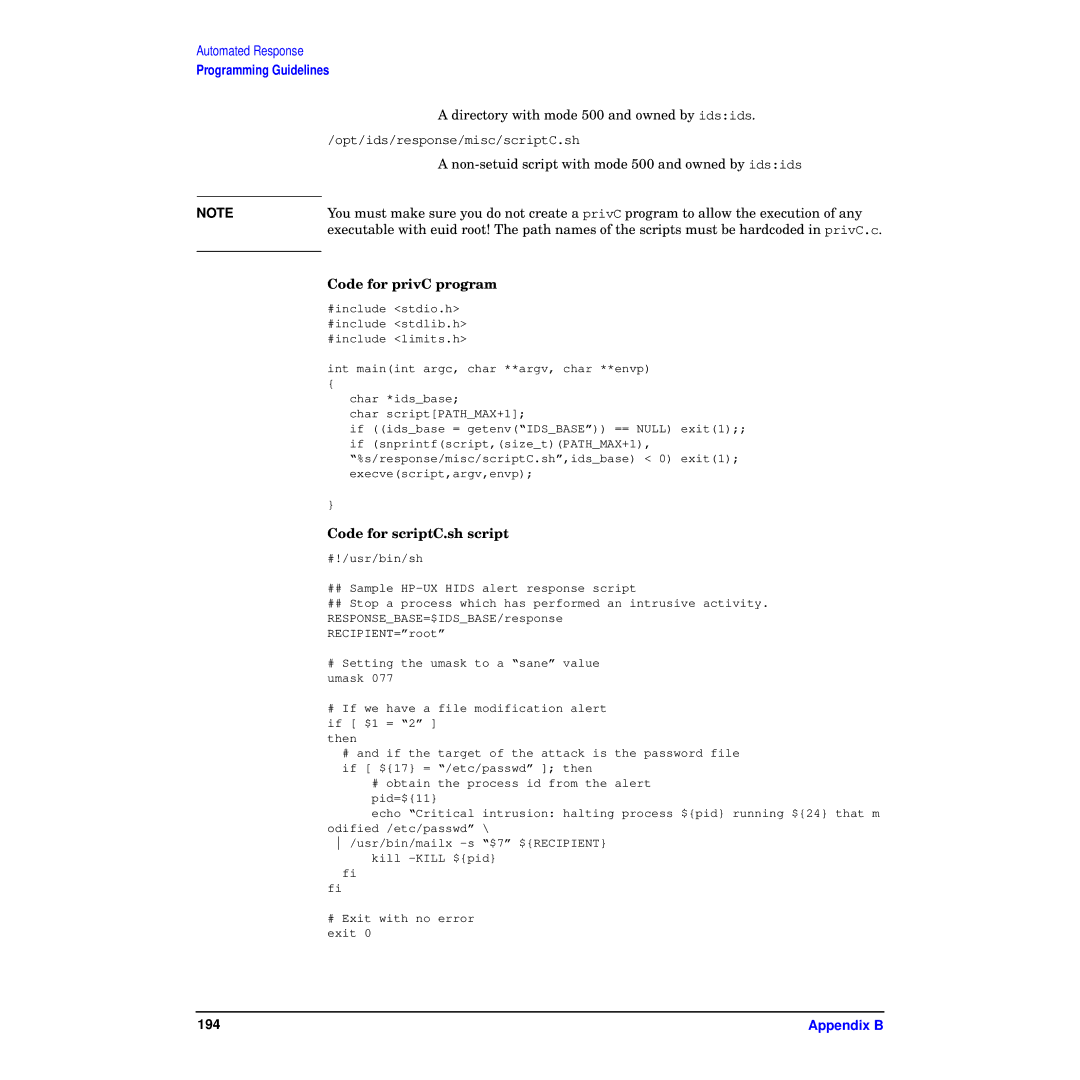Automated Response
Programming Guidelines
| A directory with mode 500 and owned by ids:ids. |
| /opt/ids/response/misc/scriptC.sh |
| A |
| You must make sure you do not create a privC program to allow the execution of any |
NOTE | |
| executable with euid root! The path names of the scripts must be hardcoded in privC.c. |
| Code for privC program |
| |
| #include <stdio.h> |
| #include <stdlib.h> |
| #include <limits.h> |
| int main(int argc, char **argv, char **envp) |
| { |
char *ids_base;
char script[PATH_MAX+1];
if ((ids_base = getenv(“IDS_BASE”)) == NULL) exit(1);; if (snprintf(script,(size_t)(PATH_MAX+1), “%s/response/misc/scriptC.sh”,ids_base) < 0) exit(1); execve(script,argv,envp);
}
Code for scriptC.sh script #!/usr/bin/sh
## Sample
## Stop a process which has performed an intrusive activity. RESPONSE_BASE=$IDS_BASE/response
RECIPIENT=”root”
#Setting the umask to a “sane” value umask 077
#If we have a file modification alert if [ $1 = “2” ]
then
#and if the target of the attack is the password file if [ ${17} = “/etc/passwd” ]; then
#obtain the process id from the alert
pid=${11}
echo “Critical intrusion: halting process ${pid} running ${24} that m odified /etc/passwd” \
/usr/bin/mailx
fi
fi
#Exit with no error exit 0
194 | Appendix B |
